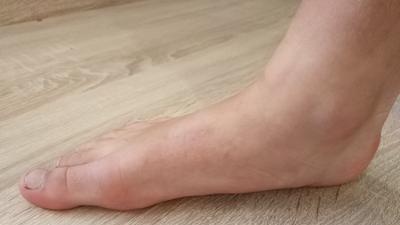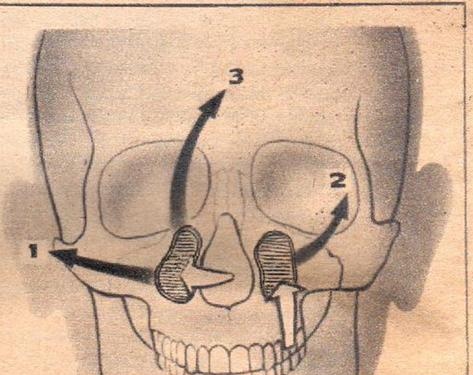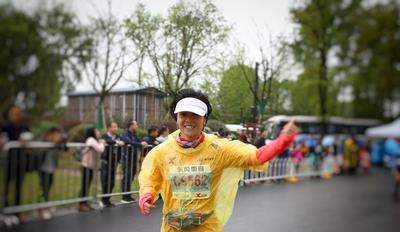|
 We are often amazed at the ability of circus performers to walk blindfolded on a thin wire, to balance on a small board mounted on many reels, or to ride one wheel of a bicycle, pedaling alternately with feet and hands. We are often amazed at the ability of circus performers to walk blindfolded on a thin wire, to balance on a small board mounted on many reels, or to ride one wheel of a bicycle, pedaling alternately with feet and hands.
And the most difficult exercises of gymnasts performing jumps with complex rotations and somersaults on a narrow beam! What sense of balance must be possessed, each of us will think, so that in all these cases we do not end up on the floor ?! Training, more precisely, special training, - the circus artist or sportsman will answer.
Is there a need to train a sense of balance in everyday life? There is such a need. And not only in order not to end up in a trauma center on ice, not only so as not to fall too often on the track or fall into the water, crossing a stream along a log, but in order to maintain health and a high level of efficiency in production , during sports activities, in everyday life.
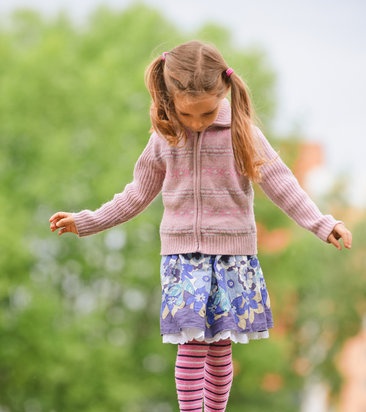
The desire to maintain balance is characteristic of all living things. All are affected by the force of gravity. This also applies to fish that can flip upside down. A person, leaning on two limbs when walking, largely needs to maintain stability when moving. Consciousness helps him and train this stability. Before giving some specific advice on balance training, let's dwell on the balance function itself, its terms, and dynamics throughout life.
The human body is never completely motionless. It constantly loses its balance and immediately restores it. The ability to hold our own body in a comfortable position becomes so familiar that we do not attach importance to it.
What does the regulation of body position in space depend on? A kind of computer in this case is the central nervous system. It is in the cerebral cortex that information flows from the vestibular apparatus located in the ear cavity, from the visual analyzer, as well as from the joints, tendons and muscles. Receiving information about the state and vitality of these organs, the central nervous system automatically corrects the posture and movement of a person.
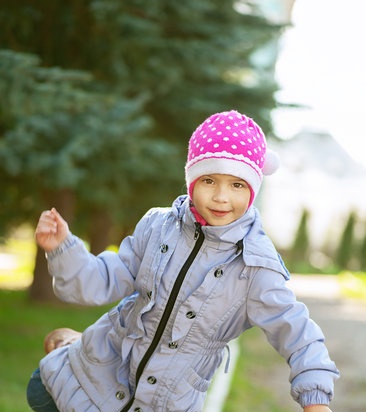
Improvement of the functions of the organs of balance largely determines the success in various sports, especially in such motor complex ones as figure skating, acrobatics, artistic and rhythmic gymnastics, shooting, and diving. A well-developed sense of balance in the professional work of drivers of various types of transport, climbers, pilots, sailors, builders, ballet dancers, metalworkers and many others is especially important.
The balance function develops most intensively from 7 to 10 years old, and by 12-14 years old it reaches the adult level. In the future, the state of balance fluctuates depending on age, physical development, health and environmental conditions.
Mass examination of women aged from 26 to 70 years, engaged in health groups, helped to identify certain patterns of age-related changes in the state of the balance function. Three stages can be traced: at the age of 26 to 45 years, the function of equilibrium in women is relatively stable, at 45-50 years, there is a tendency to its deterioration, after 55 years it begins to decrease significantly. That is why prophylaxis to prevent a decrease in balance should be started as early as 36-45 years old.

The most common signs of loss of balance are dizziness when there is a sudden change in body position, for example, when riding on a swing or even when driving all kinds of transport.At the same time, the state of health worsens, the pulse quickens, and nausea appears. Deterioration in balance function often leads to falls. It has been established that the fear of falling is natural for a person, which is one of the basic instincts of self-preservation. Such fear arises in conditions where there is a real, and sometimes imaginary, danger of losing balance and orientation, for example, when a person approaches the edge of a cliff. Dizziness can also be caused by general fatigue, for example, after a busy, hard working day. At the same time, the oxygen content in the blood sharply decreases, which, in turn, affects the state of the cerebral vessels and leads to a loss of control over movements.
According to the World Health Organization, 40 to 60 percent of fatal accidents at home and at work are associated with falls. Most of them, alas, are women.

The deterioration with age of the state of the function of balance and coordination of movements interferes with the normal vital activity of the body, and in some older and elderly people it is also one of the reasons for the decrease or disability. That is why the improvement of the organs of balance in an adult should be associated not only with protecting him from falls, but also with improving his motor activity. The ability to maintain balance lends itself well to training. Balance exercises help develop good coordination of movements, mindfulness, self-confidence and even courage. In order to have good control of your own body, you need to cultivate special skills and abilities that allow you to consciously regulate the balance of the body. For this, special attention should be paid to exercises aimed at maintaining the correct vertical position of the spine, strengthening the muscles of the pelvis, abdominal muscles, neck and feet. It is important to fix attention on the head held high - a position that causes posture reflexes and not only increases the overall muscle tone, but also helps to straighten the spine. The perception of sensations from the correct straightened position of the body is achieved with the help of exercises performed against the wall, exercises with the retention of a weight on the head. They improve posture, which in turn has a positive effect on body balance. Exercising with closed eyes also significantly helps the development of "muscle feeling": the activity of the vestibular apparatus is improved.
For balance training, walking is used on the entire foot and on toes along the line drawn on the ground, a log, the curb of the sidewalk. It is useful, while standing on one leg, to perform various movements of the arms and body, to use running with frequent changes of direction and turns, to perform jumps, throwing and such not complicated acrobatic exercises as somersaults and rolls. To train the vestibular apparatus, exercises are also used, consisting of bends, rotations of the head and torso, turns with stepping, which are performed with different amplitudes and speeds. When doing this kind of gymnastics, you need to increase the number of repetitions by 1 - 2 movements every week.
To test your ability to maintain balance, you can do the following control exercise. Put feet one by one, while the toe of one leg touches the heel of the other, knees are tense, arms are extended forward, eyes are closed. If you can maintain balance for 30-40 seconds, it means that you do not need special training, you control your body well, if not, start exercising immediately.
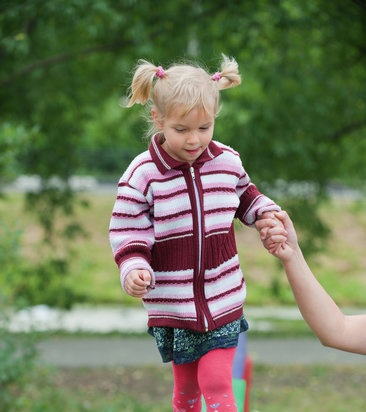
An approximate set of exercises for training the organs of balance is as follows.
- Place the foot of the bent leg on the knee of the supporting leg, hands forward or on the belt. Stand on one leg for 10-15 seconds with eyes open and closed.
- Turn to the left, with the right elbow touch the knee of the left leg bent forward, hands to the shoulders or behind the head.The same to the right (you can hold a stick behind your back).
- Press the knee of the right and left bent legs alternately to the chest with your hands (you can use a stick).
- "Swallow" back and to the sides with different initial hand positions. For relief, you can first put your foot back on your toes, and then do balance. In this case, you can hold on to any support or lean on the floor with a stick.
- Get down on your knees, socks on yourself, hands on the belt. Stand up without support on your hands.
- Deep lunge to the right, hands behind the head. Push with the right, stand on the left, right leg to the side, arms to the sides. Place your right leg, hands down. The same in the other direction.
- Put the right hand on the inside of the knee joint of the right leg bent forward, the left hand on the belt. Abduction of the thigh outward. The same with the other leg (after a while you can perform this exercise with a weight on your head).
- Standing on one leg, swing the other leg (you can accompany the exercise with various hand movements).
- Bend, grabbing the foot of the leg bent back with your hand (you can perform the exercise with a weight on your head).
- Go up and down on toes, on the toes of one leg, hands on the belt. Perform a toe stand and hold for 10 seconds.
- Stepping on the spot, turn 360 ° in any direction, head down, eyes closed. Immediately stand on one leg, the other is bent, hands on the belt, head straight, eyes closed. You can take the final pose after several turns in a circle (right, left).
- Promotion by jumping on one leg. If the exercise is difficult at first, you can replace it with waltz steps with turns to music.

I would also like to advise you to learn how to fall correctly in advance. To do this, at the time of the fall, it is important to group up, strain the muscles so that contact with the ground falls on the largest possible area of the body and is accompanied by rolling.
Do the following exercise. Squat down, then quickly fall to the floor, roll over backward, rolling onto a slightly bent back (legs are raised up, straight arms lie on the floor, preventing them from rolling to the back of the head, chin is pressed to the chest).
The higher the training level, the easier it is to adapt your movements and body positions to changing conditions. The optimal level of development of a sense of balance will allow you to clearly and economically perform various household and work movements.
M. Protasova
|
 We are often amazed at the ability of circus performers to walk blindfolded on a thin wire, to balance on a small board mounted on many reels, or to ride one wheel of a bicycle, pedaling alternately with feet and hands.
We are often amazed at the ability of circus performers to walk blindfolded on a thin wire, to balance on a small board mounted on many reels, or to ride one wheel of a bicycle, pedaling alternately with feet and hands.





